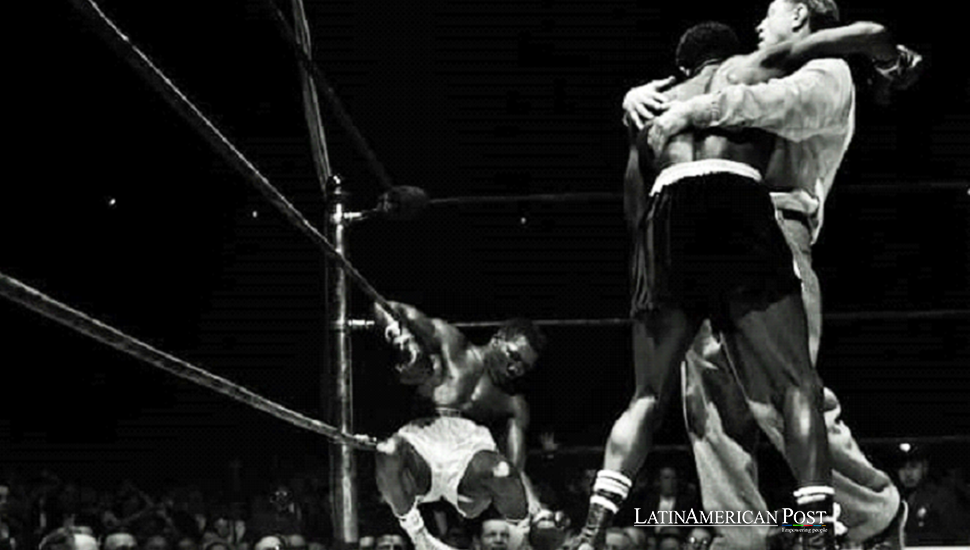The Tragic Death and Legacy of Cuba’s Benny “Kid” Paret

Benny “Kid” Paret had intrigued boxing fans with his toughness and natural abilities, but he died after a savage match against Emile Griffith that exposed one of the sport’s uglier truths. His legacy still provokes thought and argument 60 years on.
From the Sugarcane Fields to the Boxing Ring
Benny Paret’s story began far from the glitz of Madison Square Garden. Born in Santa Clara, Cuba, in 1937, he grew up under the relentless sun, working alongside his family in the sugarcane fields. Despite poverty being a constant presence in his life, and education being a luxury he could not afford, Benny’s resilience shone through in the rough-and-tumble streets of his hometown.
“He had this fire in him,” recalled Manuel Alfaro, the Cuban restaurateur who discovered Paret during a trip to Havana. Alfaro saw something special in the wiry young man who had a knack for turning street fights into victories. By the age of 13, Benny was already a budding amateur fighter. He wasn’t polished, but he couldn’t be knocked down, Alfaro later told reporters.
By 1955, Paret had turned professional, winning over fans with his scrappy style and seemingly indestructible chin. His fights were not always pretty, but they were unforgettable. Benny became a symbol of resilience for many Cuban immigrants in the United States—a fighter who carried their hopes and dreams into the ring each time he put on his gloves.
The political shadow over Paret’s life and career unfolded amid tumultuous political change. Cuba, seared by Fidel Castro’s revolution in 1959, saw professional sports banned outright in 1962. Thousands of Cuban athletes fled to the United States for an opportunity to play and live.
For Paret, the United States was both a land of opportunity and a cultural minefield. As an Afro-Cuban, he faced the dual challenges of racial discrimination and being an immigrant in a country increasingly hostile to his homeland. Yet he rose above these obstacles, capturing the welterweight championship in 1960 by defeating Don Jordan. The victory was celebrated in Cuba and the Cuban diaspora, with many seeing it as a moment of national pride amid the tensions between the two nations.
But Benny’s success came with pressure. “Benny was fighting for more than himself,” said sportswriter Rafael Iglesias in a 1962 column. “He was fighting for Cuba, for exiles, for everyone who felt displaced.” That weight grew heavier as his career progressed, taking a toll on the young fighter.
A Rivalry Turned Tragedy
No chapter of Benny Paret’s career is as defining—or devastating—as his trilogy of fights with Emile Griffith. Their first meeting in April 1961 ended with Griffith knocking out Paret in the 13th round to claim the welterweight title. Paret regained the championship five months later in a controversial split decision that left Griffith and his camp seething.
The tension between the two fighters reached its boiling point during the weigh-in for their third fight on March 24, 1962. Accounts from that day describe a heated exchange, with Paret allegedly calling Griffith maricón, a derogatory term for a homosexual. The insult stung deeply in an era when such accusations could ruin a career. Griffith, who later came out as bisexual, carried that moment of humiliation into the ring.
The fight, broadcast live on national television, was brutal. Paret showed flashes of his trademark toughness, even knocking Griffith down in the sixth round. But as the bout wore on, Griffith’s power became overwhelming. In the 12th round, Griffith trapped Paret in a corner and unleashed a torrent of punches—29 in total—before the referee, Ruby Goldstein, intervened. By then, Paret had already collapsed, slumping against the ropes.
The crowd fell silent as medical personnel rushed into the ring. Paret was rushed to Roosevelt Hospital, where he underwent emergency brain surgery. He never regained consciousness. Nine days later, on April 4, 1962, Benny “Kid” Paret was pronounced dead, a tragic event that sent shockwaves through the world of boxing and beyond.
A Sport Under Scrutiny
Paret’s death sent shockwaves through the world of boxing and beyond. Critics condemned the sport’s violence, questioning whether it should even exist. Referee Ruby Goldstein faced heavy criticism for failing to stop the fight earlier, while others pointed to the toll that previous brutal bouts had taken on Paret. He had already lost three of his last four matches within 12 months of his final fight against Gene Fullmer.
Broadcasters who had profited from boxing’s popularity faced scrutiny as well. ABC, the network that aired Paret’s tragic bout, reduced its boxing coverage in the following years. The incident also raised serious ethical concerns about the viewing of violent sports, prompting many to question the morality of profiting from the spectacle of human suffering.
Also read: Brazil’s MMA Legacy: A Global Force in Combat Sports
For Emile Griffith, the fight became a source of guilt he carried for the rest of his life. A decade later, in the documentary “Ring of Fire: The Emile Griffith Story,” he reflected on that fateful night, saying, “I didn’t want him to die. I wanted to win, but I didn’t want that.” Griffith did not expect to meet Paret’s son, but when they did, he took him to Paret’s grave and forgave him, providing solace to a man devastated by the loss.





